Noise Output
Fan Full Speed, 75% & 50%
Noise is high at full speed, compared to other cards, and pretty high at 75% speed. On the contrary, it is low at 50% speed.
Idle, Multimedia & Rendering
Thanks to the fan-stop feature, most graphics cards are dead quiet at idle and multimedia. The Asus TUF RTX 5090 is also dead silent at rendering.
Gaming
During short gaming periods, the Asus card is silent. On the contrary, in the 3D Mark Speed Way benchmark, noise output is high since the card pulls 600W from the PSU.
Furmark
In Furmark, where the card is stressed, the output noise is close to 37 dBA, which is high!
Frequency Plots
30% Fan Speed (Min Fan Speed)
- Peak Frequency: 6.3 KHz
31% Fan Speed (Rendering – AVG / 1% High RPM)
- Peak Frequency: 6.3 KHz
50% Fan Speed (Gaming RT OFF – AVG PRM)
- Peak Frequency: 160 Hz
51% Fan Speed (Gaming RT OFF – 1% High RPM)
- Peak Frequency: 160 Hz
60% Fan Speed (3DMark Speed Way 4K – AVG RPM)
- Peak Frequency: 630 Hz
61% Fan Speed (3DMark Speed Way 4K – 1% High RPM)
- Peak Frequency: 630 Hz
62% Fan Speed (Furmark – AVG RPM)
- Peak Frequency: 630 Hz
64% Fan Speed (Furmark – 1% High RPM)
- Peak Frequency: 1.25 KHz
75% Fan Speed
- Peak Frequency: 1.25 KHz
100% Fan Speed
- Peak Frequency: 400 Hz
Signal Recordings
I have recorded the signals shown above, but please keep in mind that I’ve enabled Automatic Gain Control (AGC) to do so to make it easier for you to reproduce them. The provided recordings are only offered for aural identification purposes.
30% Fan Speed
31% Fan Speed
50% Fan Speed
51% Fan Speed
60% Fan Speed
61% Fan Speed
62% Fan Speed
64% Fan Speed
75% Fan Speed
100% Fan Speed
- Prologue & Technical specifications
- NVIDIA’s Key Technologies
- Box & Contents
- Part Analysis
- Specifications Comparison
- Test System
- Game Benchmark Details
- Raster Performance
- RT Performance
- RT Performance + DLSS/FSR Balanced
- Raytracing Performance + DLSS/FSR Balanced + FG
- DLSS/FSR Balanced (No RT)
- DLSS/FSR Balanced + FG (No RT)
- Relative Perf & Perf Per Watt (Raster)
- Relative Perf & Perf Per Watt (Raster + DLSS/FSR)
- Relative Perf & Perf Per Watt (RT)
- Relative Perf & Perf Per Watt (RT + DLSS/FSR)
- Relative Perf & Perf Per Watt (RT + DLSS/FSR + FG)
- Rendering Performance
- Operating Temperatures
- Operating Noise & Frequency Analysis
- Power Consumption
- Clock Speeds & Overclocking
- Cooling Performance
- Epilogue

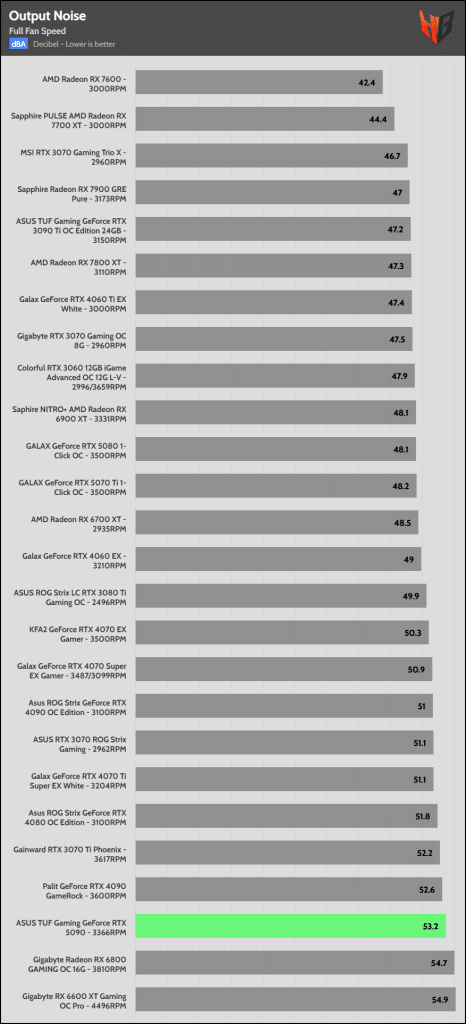
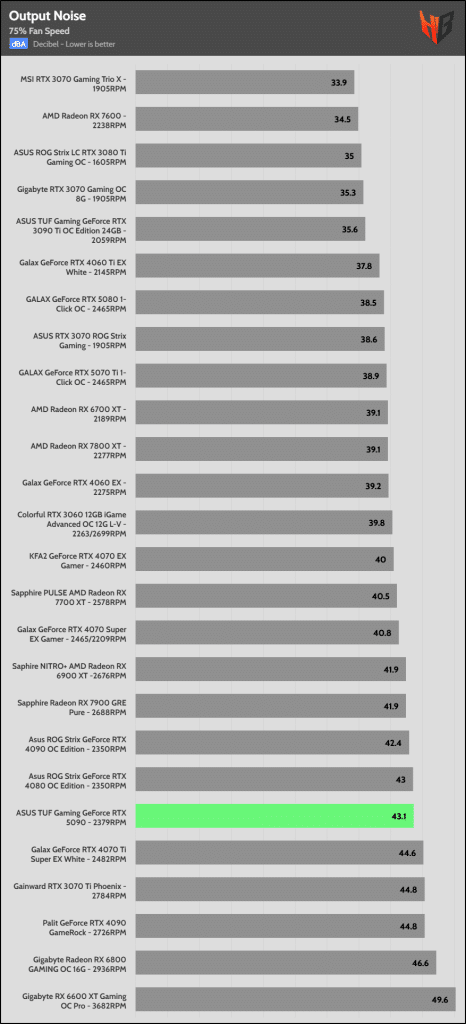
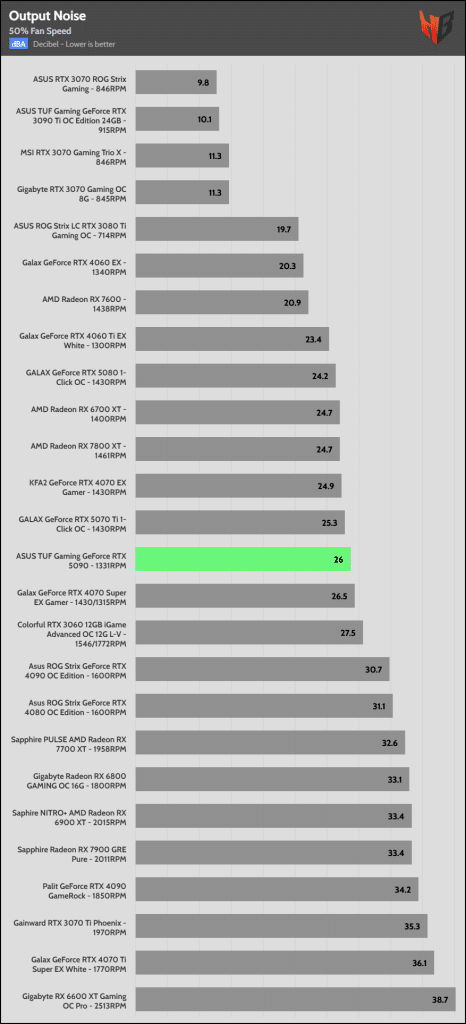
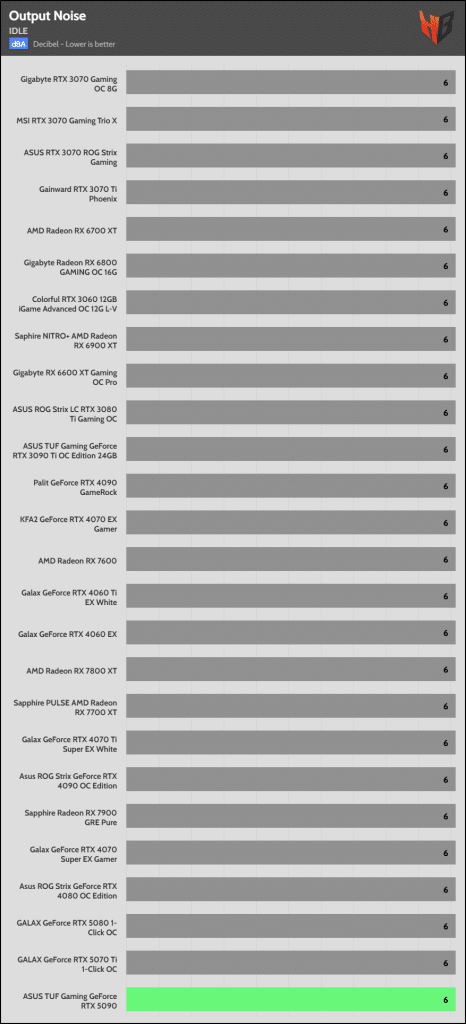
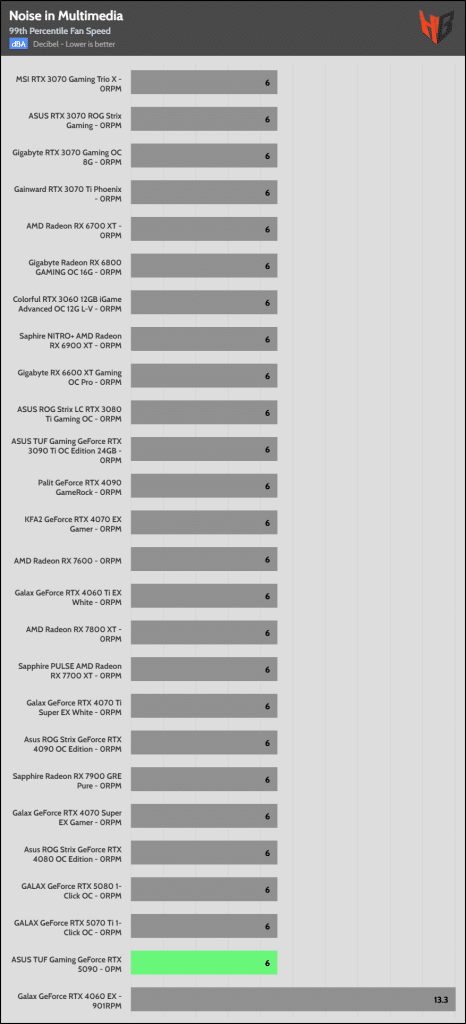
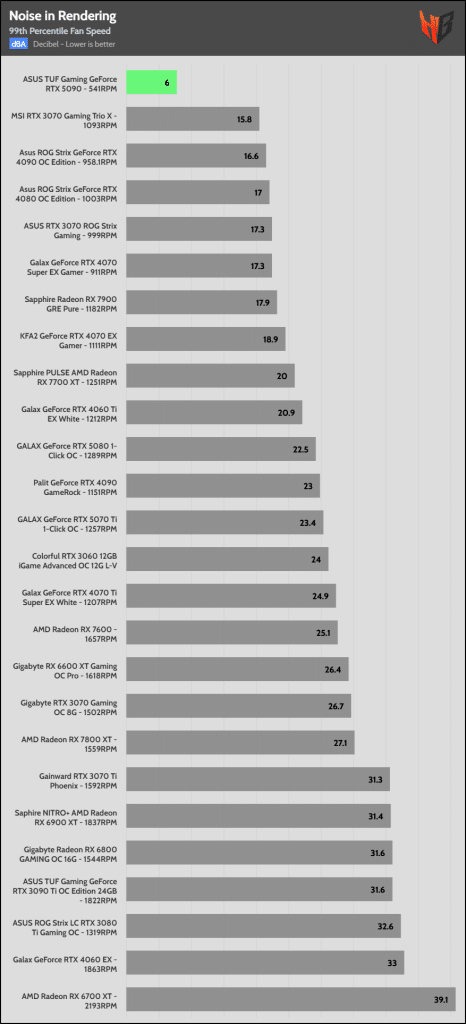
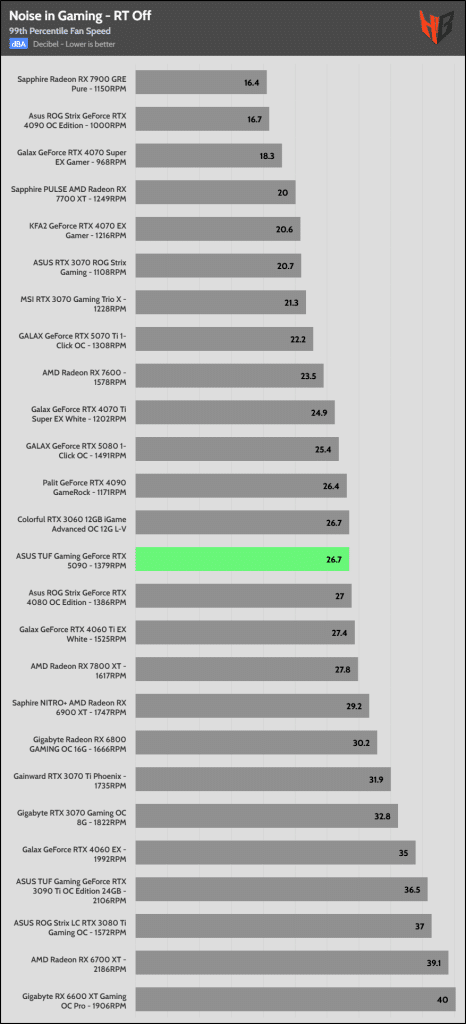
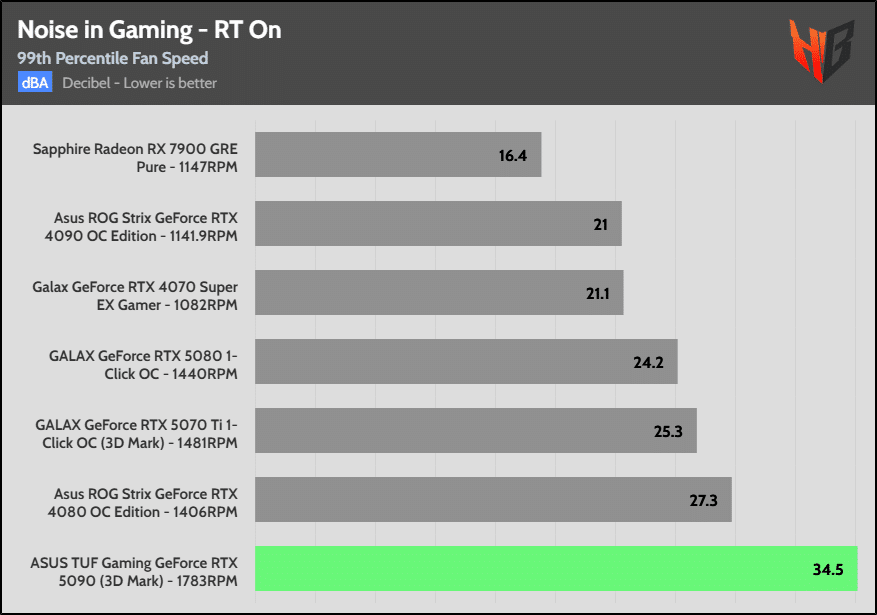
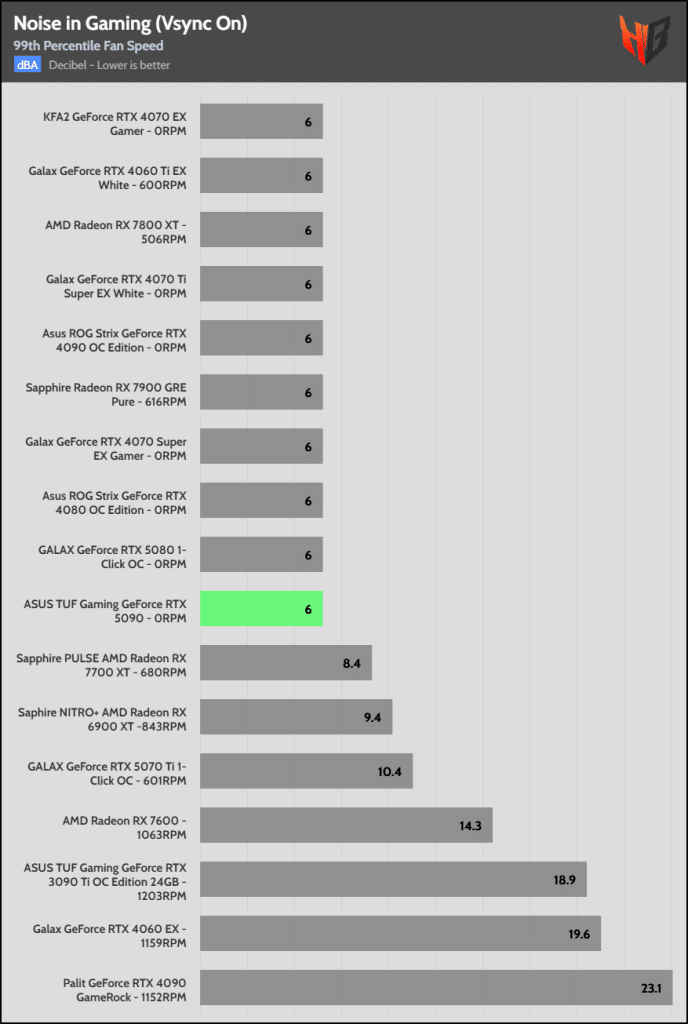
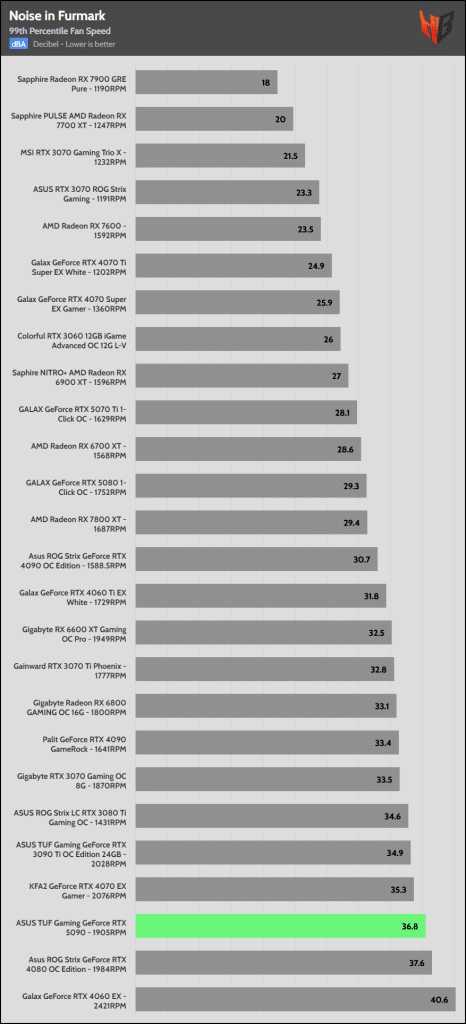
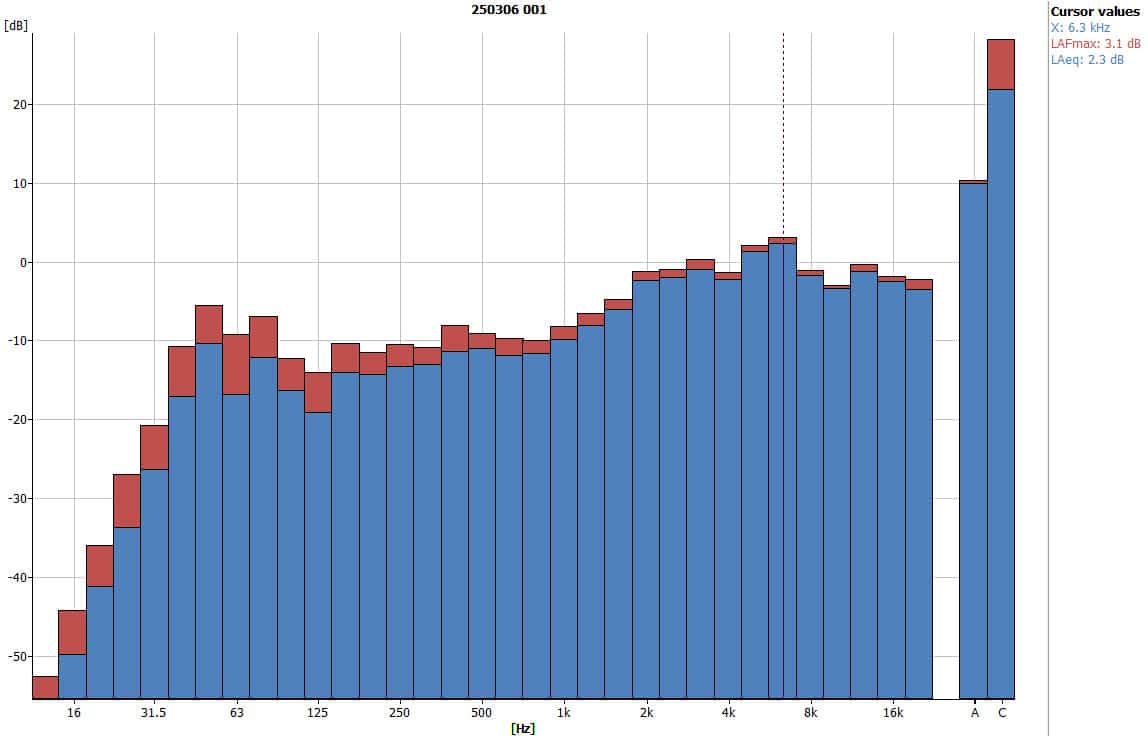


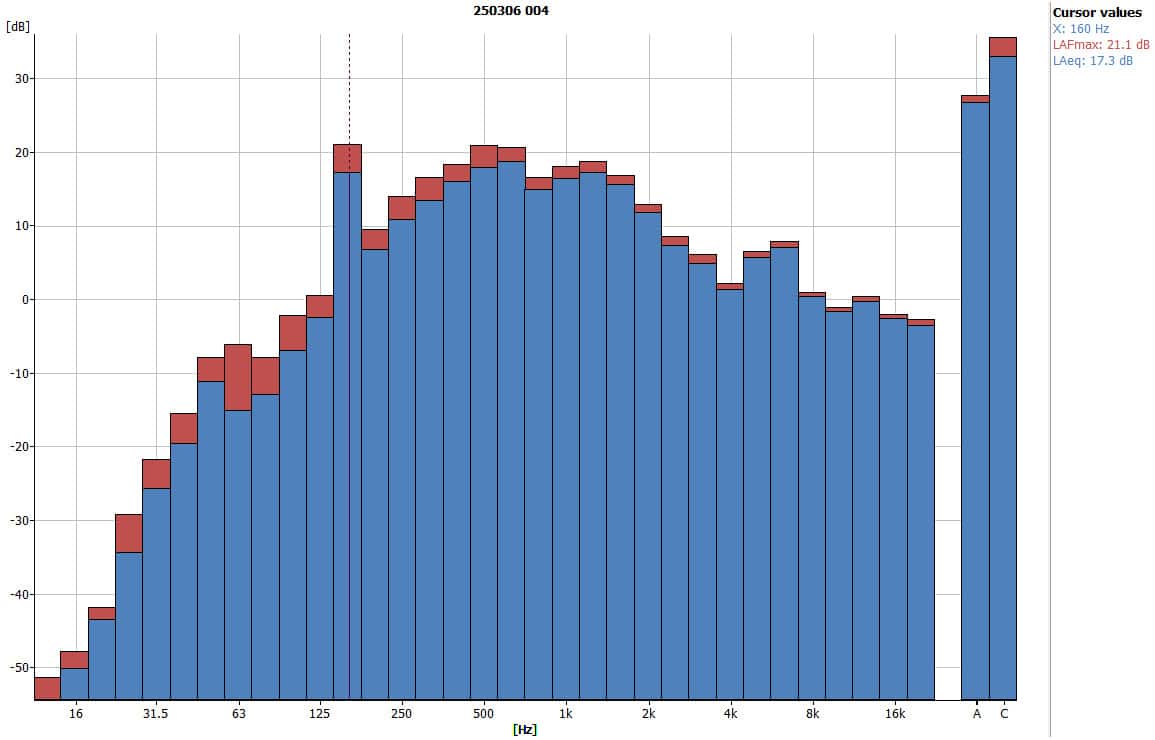




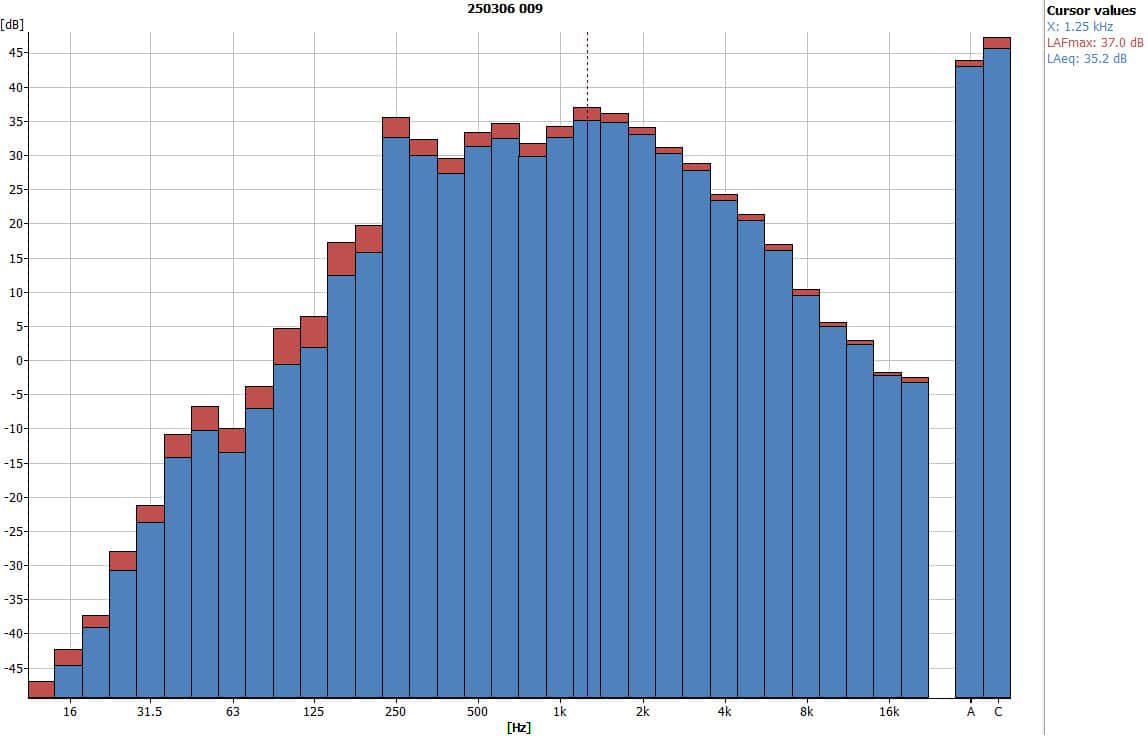
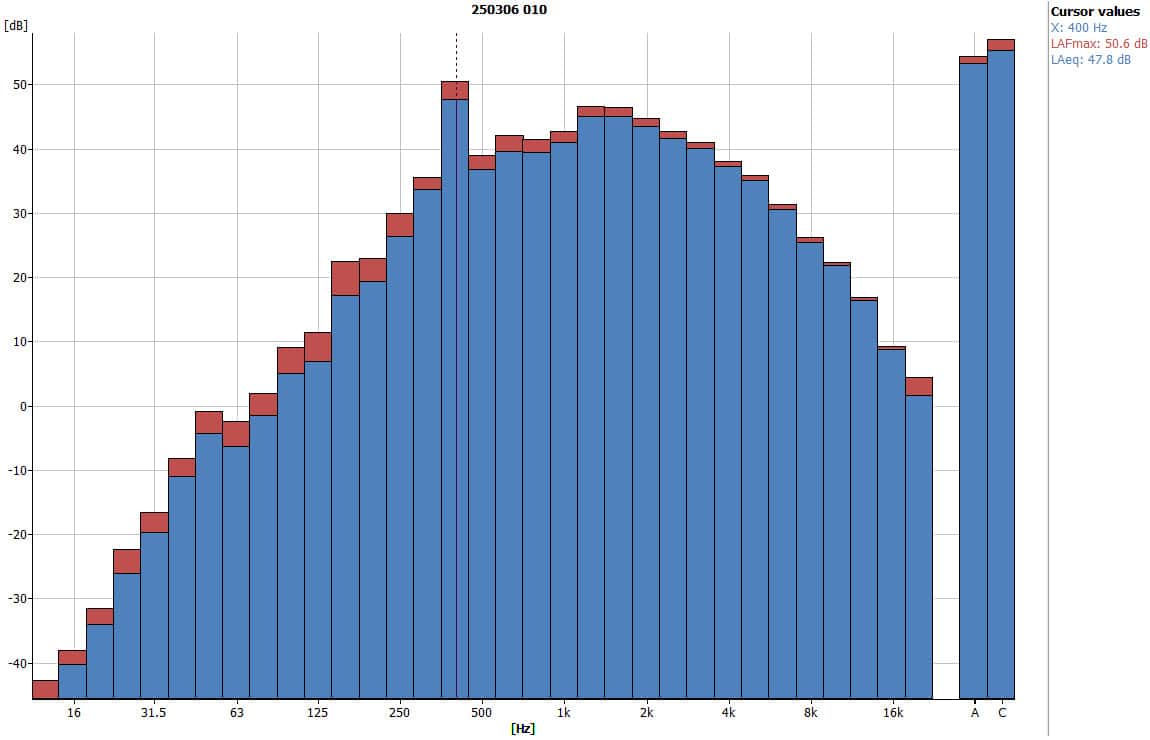
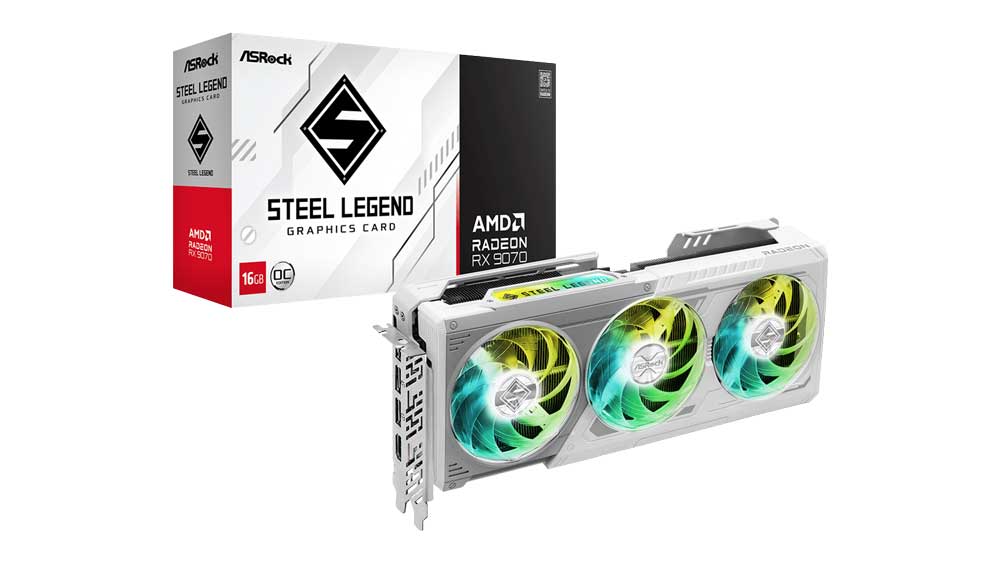

Hi what was the max memory temps?
Can you do coil whine analysis? I’ve bought and returned so many cards because coil whine is unbearable with a silent pc.
In game menus, if there is no FPS limiter, most have coil whine, at desktop this is not the case.
Thank you for the review. Very good stuff.
When can we expect a review and the cybernetics report for the new FSP Mega TI 1350W PSU ? Looking forward to it i think it could be a very good performer at least i hope so.
Will ask from FSP review samples. Unfortunately lately I am over my head with work, and trying to find a solution on the 12V-2×6 thing, so limited time for PSU reviews.
Aris did Gamemax brings you some NDA for their new LION CORE PSU, i’ve seen that they just claimed tested & certified by Cybenetics ?
We did test a Gamemax PSU, but it is already on Cybenetics and it isn’t this model. I will look into this now that you mentioned it.
https://www.youtube.com/watch?v=D-7TbwosSC0 After watching this video, I want to ensure their brand never overclaims Cybenetics certifications. If they overclaim, it could be a fatal flaw. Alternatively, you can advise their brand to never overclaim that a product wasn’t tested by Yours.
I paired one with the FSP Hydro Ti PRO 1000W as you recommend in your tier lists, I was really looking forward to reviews of it!
Just received it 2 days ago and first impressions are great, I have it running at 45% constant fan speed and it’s increadibly silent, only when it gets closer to 65ºC or so I ramp up to 55% and there in really high loads it increases until 60% or so, keeping it under 70ºC without problems, while still being very quiet.
I tried a bit of undervolting and can do 0.93V with +412 MHz keeping pretty much 98% of the performance in 3DMark tests, and passing the Steel Nomad stress test.
I have measured the connector temperature with a FLIR E4 both at the PSU (~35ºC) and at the GPU (~55 to 65ºC as you say) while the stress test was running, I don’t see a problem at all. It’s clear that it gets hotter on the GPU as it is very close to the heatsink and very hot parts on the PCB.
I would be curious to see if you could do some undervolt analyses 🙂 I think there’s a lot of potential to reduce the crazy power it is uses. I agree that using it at maximum power for long times is bonkers, my entire computer enclosure was really hot after the stress test.
Cheers!
I also noticed in this graphics card, and not only, that the 12+4 header is so close to the GPU’s heatsink. It might not affect as much as I initially thought, but probably isn’t the best spot.
This period I am over my head with various projects and reviews, but I will do more work on the 5090 and examine more usage scenarios. This card required strong airflow for sure!
Yes, I have it in a good old Phanteks Enthoo Evolv (front modded) and it becomes a sauna in there…. But my 13700KF with a LF III modded to P12 MAX fans does a pretty good job to keep it cool in real usage scenarios, while the GPU also remains at decent temperatures.
I’m a big fan of silent PCs and I know that temperatures are not that big of a deal for electronics components (electronic engineer myself working in automotive industry) so I’m fine with that.
But of course, power is power and it has to go somewhere, so the environment around gets pretty warm.
Looking forward to seeing more tests when you have the time 🙂